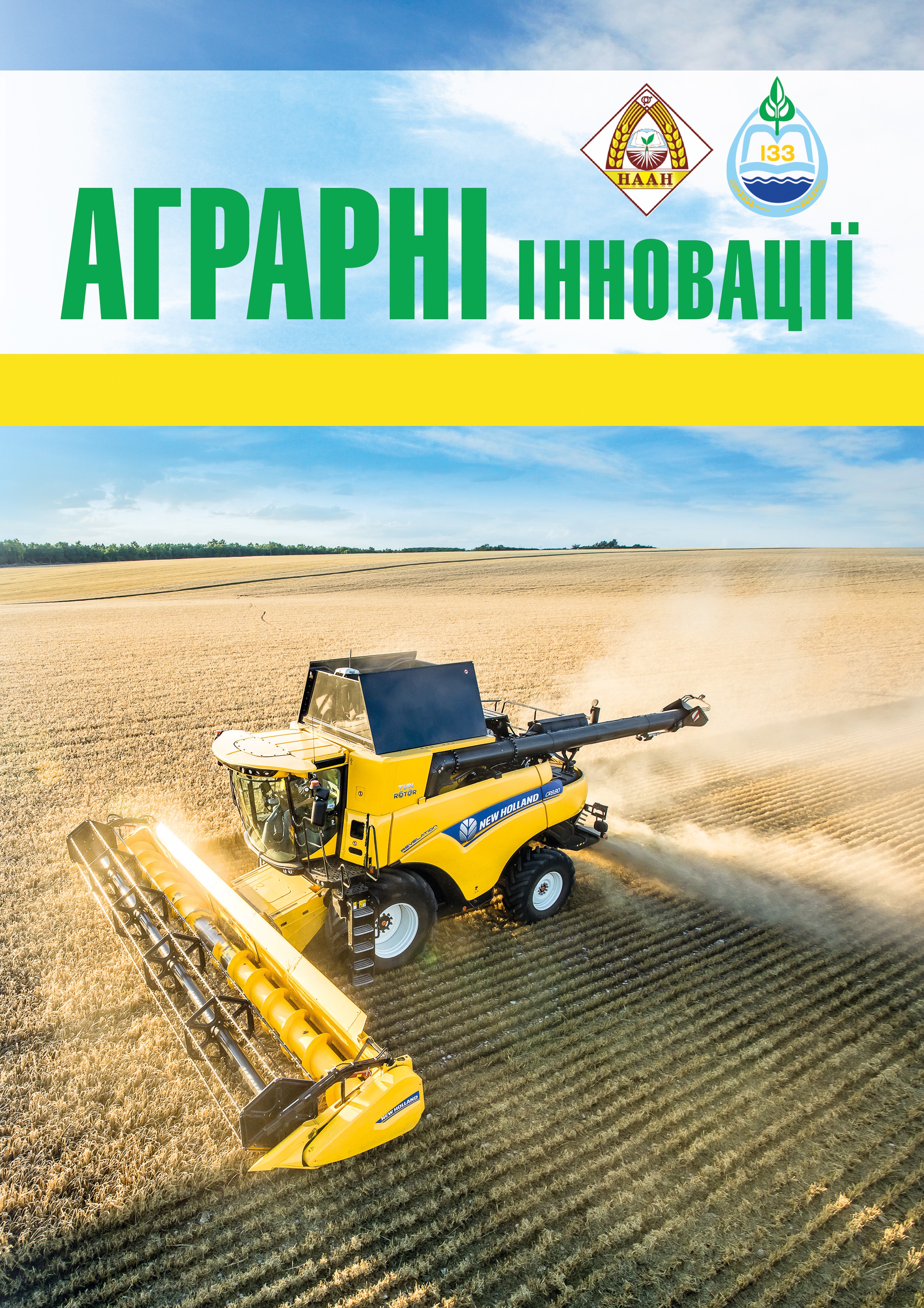DYNAMICS OF PHYSICAL AND MECHANICAL PARAMETERS OF THE SOIL, DEPENDING ON IRRIGATION REGIMES AND BASIC SOIL CULTIVATION IN MAIZE CULTIVATION IN SOUTHERN UKRAINE
Abstract
The article reflects the results of studies on the dynamics of physical and mechanical soil parameters, depending on irrigation regimes and basic soil cultivation in the cultivation of corn in Southern Ukraine. The research task was to investigate the dynamics of physical and mechanical parameters of the soil, depending on irrigation regimes and basic soil cultivation in the cultivation of corn for grain in the south of Ukraine. Field experiments, laboratory and analytical studies were carried out during 2012–2015 according to the field research methodology at the Institute of Irrigation Agriculture of the National Academy of Sciences of Ukraine. The optimum density of dark chestnut soils for maize is 1.10–1.30 g/cm3. Exceeding the optimum density worsens the use of plants moisture from the soil. Porosity significantly affects the development of plants, because of this indicator depends on the air and water regimes of the soil. Due to excessive compaction in the soil biological activity, soil filtration decreases. Data from our studies indicate that during the stairs the porosity indices of the soil layer of 0–40 cm were almost identical. The difference between the variants of the experiment did not exceed 1.5 %. The water permeability of the soil varied according to different variants of the main cultivation. Thus, it was found that the highest water permeability in the experiment at the beginning of the vegetation was observed in the variant of plowing on 28–30 cm at a level of 3.4 mm/min. Replacing the plow on the 28–30 cm reverse treatment at 20–22 cm led to a decrease in porosity to 3.1 mm/min. or 0.3 mm/min. By results of researches it is established, that plowing on 28–30 cm positively influences parameters of density, porosity and water permeability of soil. In all cases of using deep circulating plowing, the most optimal physics-mechanical properties of the soil were observed, which in turn positively influenced the growth and development of maize plants. The most compacted soil turned out to be the application of surface tillage, or disk processing to a depth of 12–14 cm, which in turn led to a decrease in porosity and water permeability. Optimum density, porosity and water permeability parameters were observed when applying the soil protection irrigation regime.
References
2. Ромащенко М.І., Балюк С.А. Зрошення земель в Україні: стан та шляхи поліпшення. Київ : Світ, 2000. 114 с.
3. Маслак О.І. Зернові перспективи України. Пропозиція. 2009. № 2. С. 34–37.
4. Писаренко В.А., Коковіхін С.В., Писаренко П.В. Рекомендації з режимів зрошення сільськогосподар-ських культур в Херсонській області. Херсон : Айлант, 2005. 20 с.
5. Дзюбецький Б.В., Черчель В.Ю., Антонюк С.П. Селекція кукурудзи. Генетика і селекція в Україні на межі тисячоліть. Київ : Логос, 2001. Т. 2. С. 571–589.
6. Циков В.С. Технология, гибриды, семена. Днепропетровск : Институт кукурузы, 1995. 68 с.
7. Ушкаренко В.О., Нікішенко В.Л., Голобо-родько С.П., Коковіхін С.В. Дисперсійний і кореляцій-ний аналіз у землеробстві та рослинництві : навч. посіб. Херсон : Айлант, 2008. 272 с.






